I share something with Jan Johnsen, author of The Spirit of Stone — a respect for stones and the qualities they bring to a landscape.
At Glen Villa, my garden in Quebec, I’ve used stones in paths, steps and walls. I’ve used them more unusually in the gabion walls of The Aqueduct and in the parking area in front of the house.
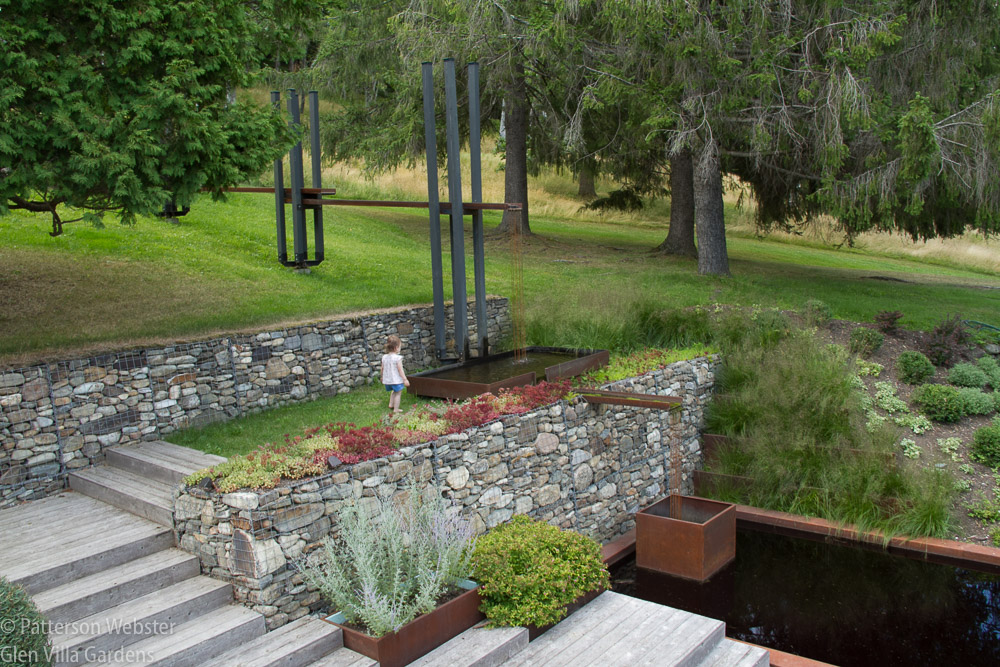
Gabion walls can be practical and aesthetically pleasing. A low pool can be attractive to a tiny granddaughter.
Two stunning moss-covered rocks in the woods dictated the route of a path that we installed shortly after we acquired the property in 1996. A rock only partly exposed became the centrepiece of a new shrub border when we uncovered more of it. And at the Skating Pond, smooth blue-toned rocks are a highlight, setting a colour palette for the plantings that surround them.

Lime green ninebark (Physocarpus Golden Nugget) is a sharp contrast to the smooth blue stone beside The Skating Pond. We had no idea such gorgeously coloured stone was hiding underground.
The Spirit of Stone looks at uses like these and more. The subtitle of the book is an accurate description of the contents: 101 Practical & Creative Stonescaping Ideas for Your Garden. I didn’t count the ideas but the book is full of them. In effect it is a primer on the multitude of ways in which stone can be, and has been, used in gardens.
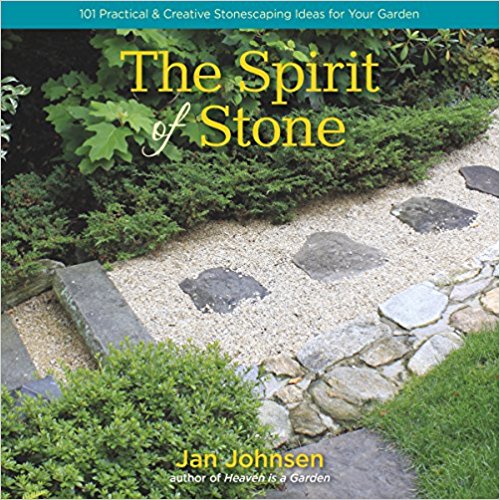
The book is a useful primer on how to use stone in the garden. It also feels good in the hand.
Short sections give practical advice about using these natural treasures in rock gardens, walks, steps, walls and as accents in the garden. A final section is about plants that work well in combination with stones large and small.
Johnsen’s advice is helpful but for me the ‘spiritual’ aspects of the book are more interesting. Stone is revered in cultures around the world and understandably so. Beautiful in its variety of colours, shapes and textures, it conveys a sense of permanence that anchors us in a way that changeable plants do not. A quote from the English artist Andy Goldsworthy underlines this point.
“A lone resting stone is not merely an object in the landscape but a deeply ingrained witness to time.”
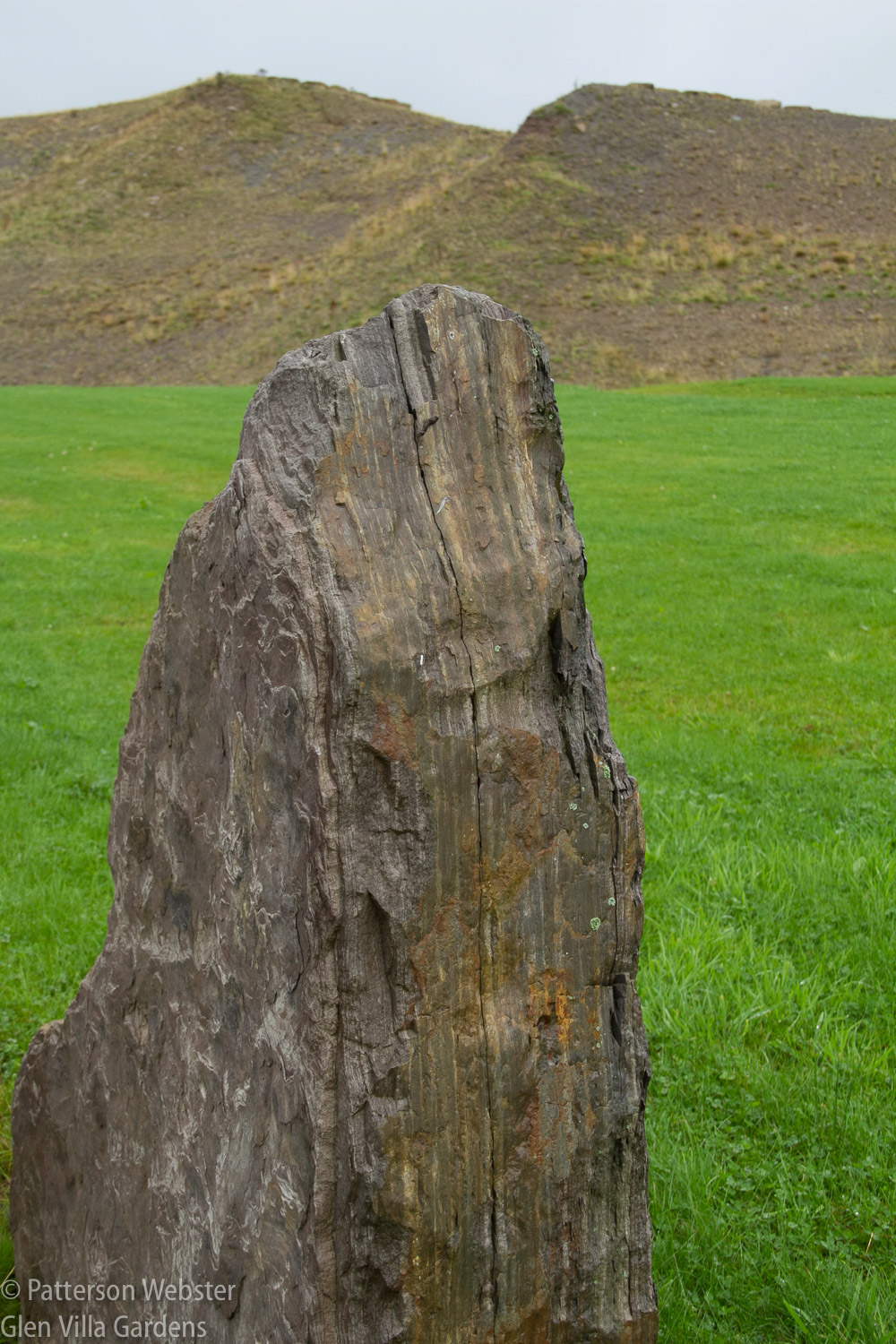
A rock at Crawick Multiverse in Scotland shows how beautiful the marks of time can be.
A number of the ‘spiritual’ uses Johnsen reviews, such as standing stones and stone circles, are familiar. Others are less so. I for one have never seen a split rock like the ones she illustrates, which apparently were regarded by Native Americans as doors to the underworld. Nor did I know that the continent’s indigenous people believed quartz contained supernatural power.
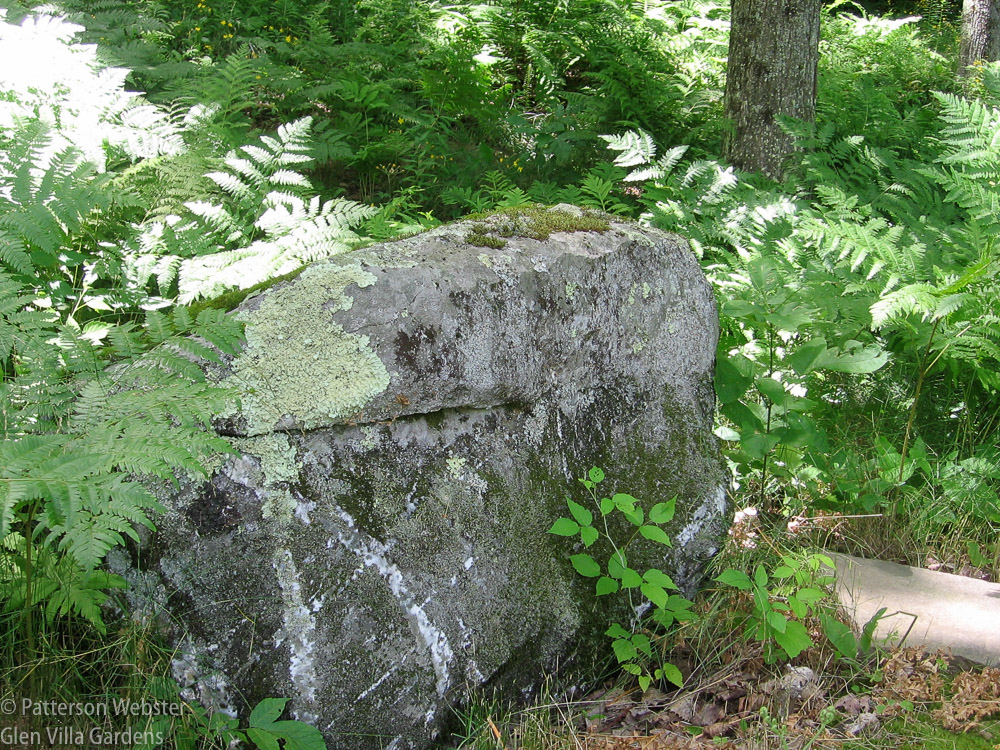
A vein of quartz forms a natural A on this rock at Glen Villa. I placed memory posts to my father and brother-in-law in this location to be near the A Rock which pulled me like a magnet.
I do know that using rock successfully requires paying close attention. Building the cascade at Glen Villa, one of the first things we did in the garden, took genuine patience. We had to examine each rock, find not only its best face but the face that it wanted to show to the world. Because, odd as it may seem, rocks will speak if you give them, and yourself, time to hear.
Rock art is one of the few rock-related topics Johnsen does not address. Perhaps this is understandable since few of us are about to use rock walls as canvases to tell stories. But since I love rock art and have ventured far into the Australian outback and other places to view it, I found the omission regrettable.
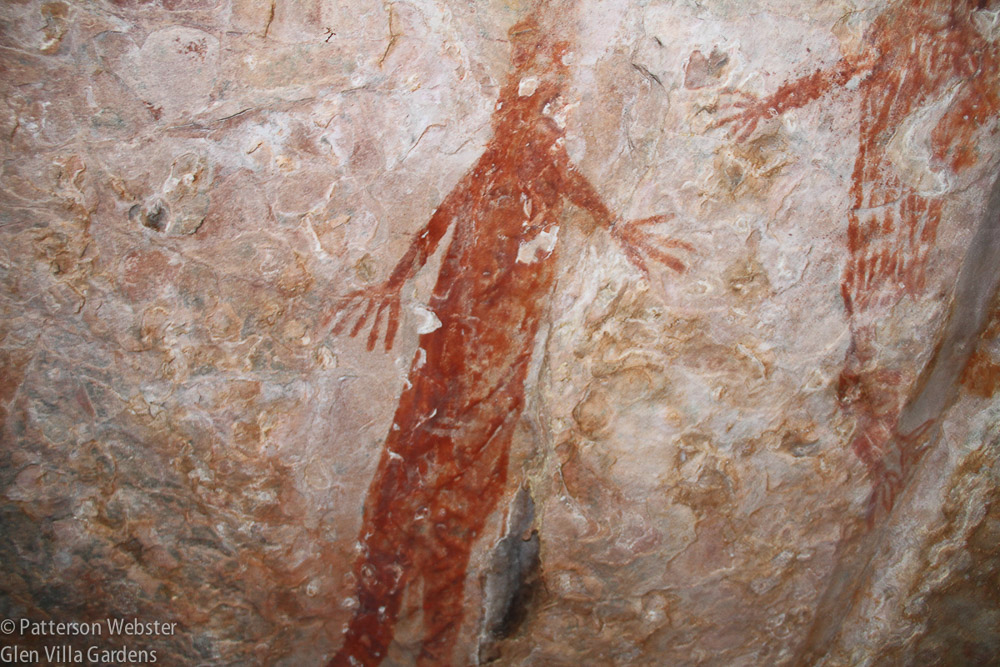
A strangely fingered figure is painted on a wall inside a cave-like overhang in the Kimberley area of West Australia.
The Spirit of Stone is not a big book. It isn’t a philosophical tome and it doesn’t take long to read. But if you are looking for good ideas and practical advice about using stone in your garden, this is a helpful book to read.




